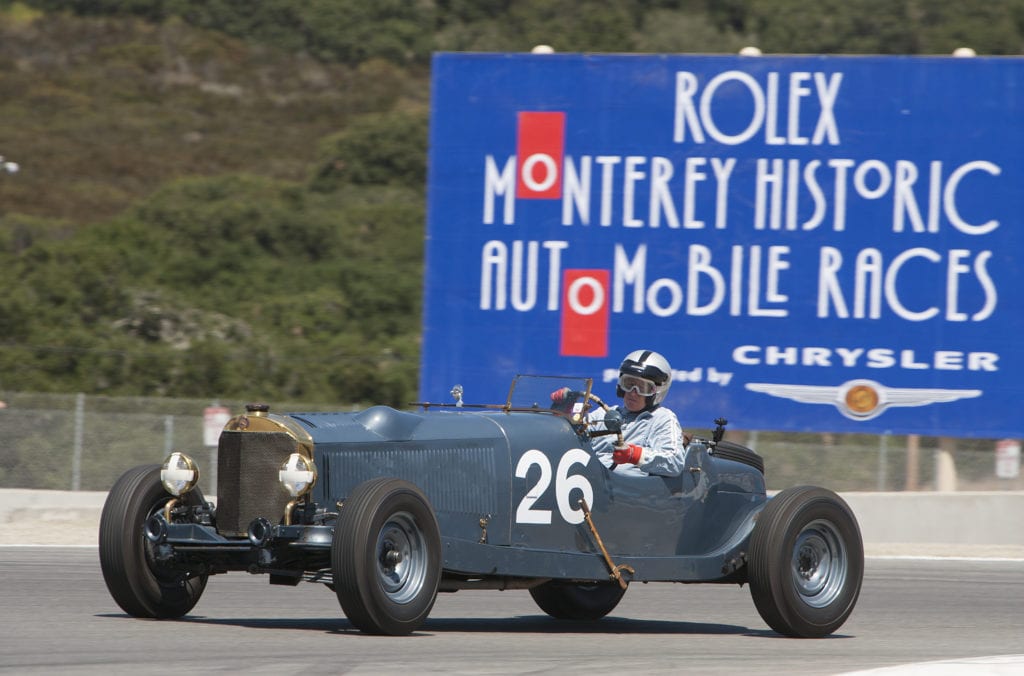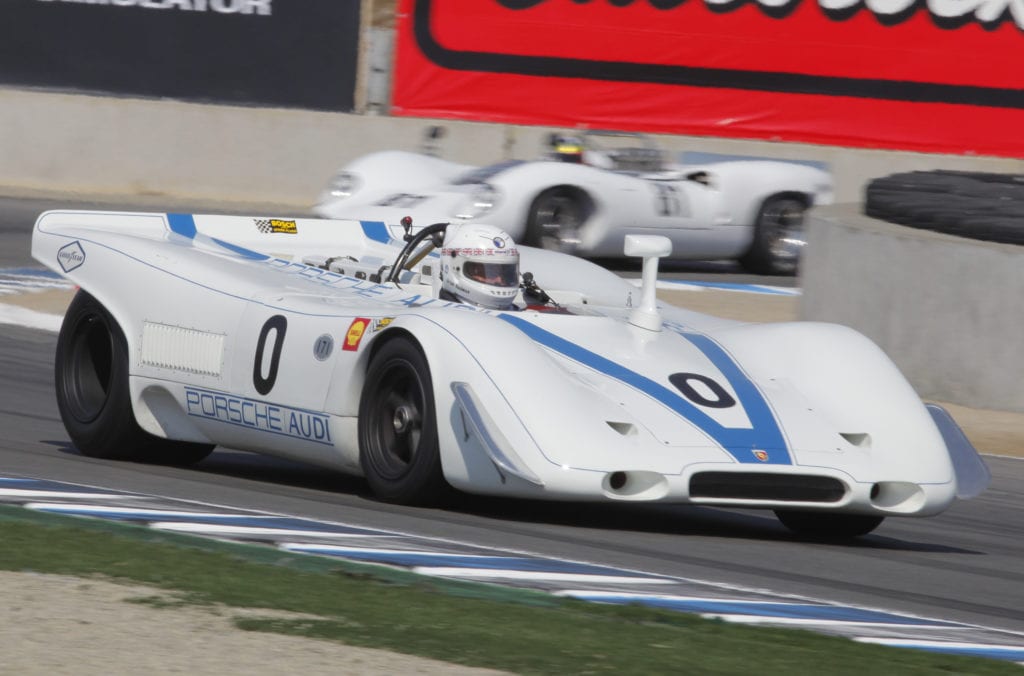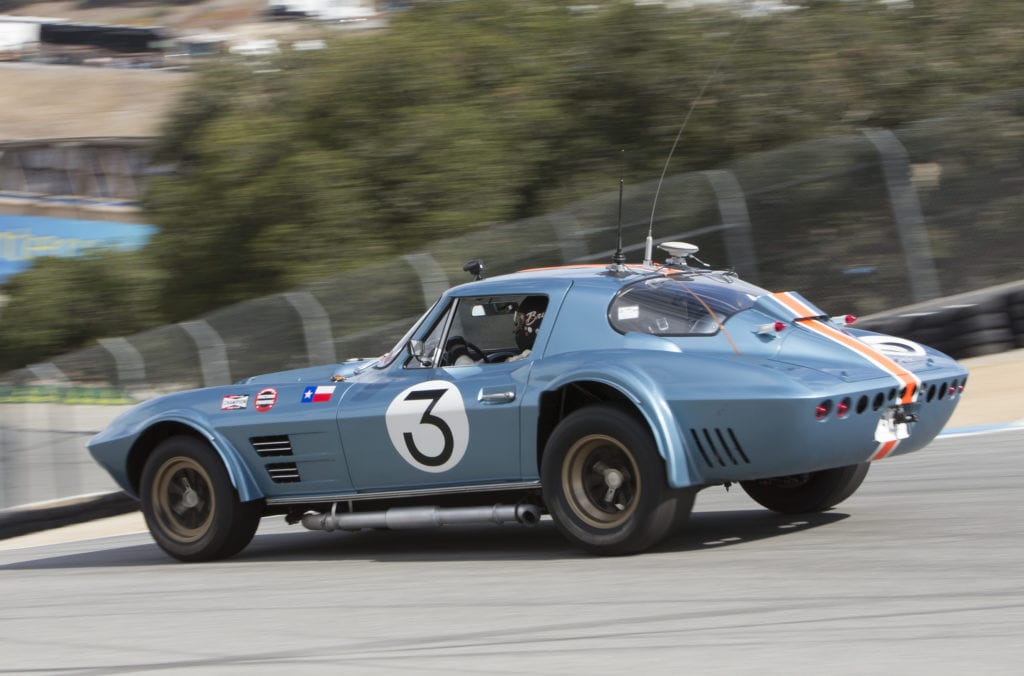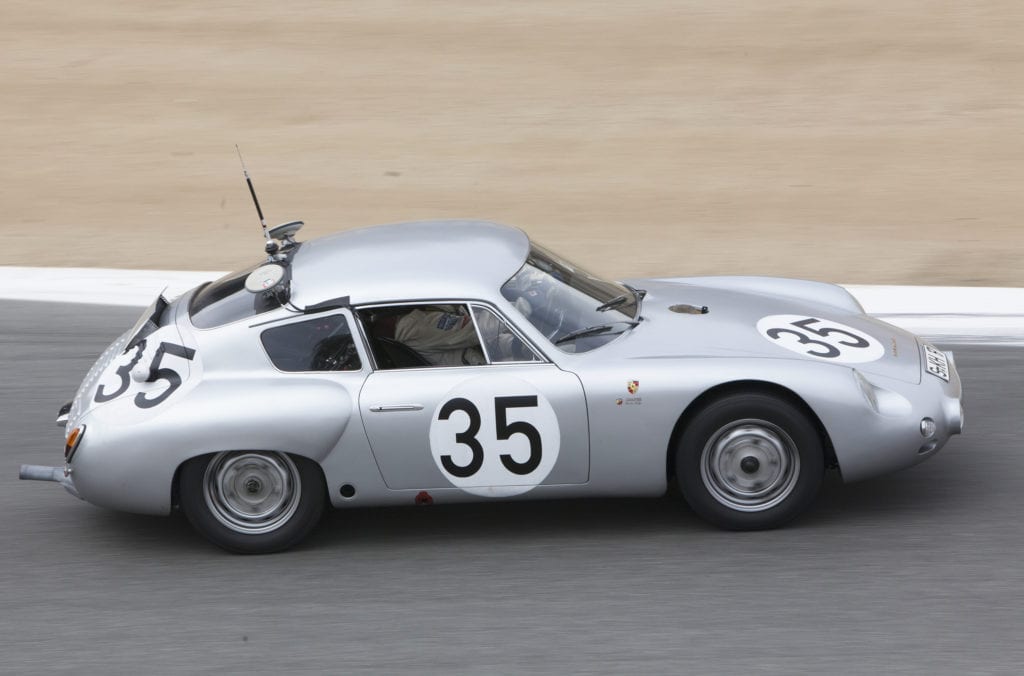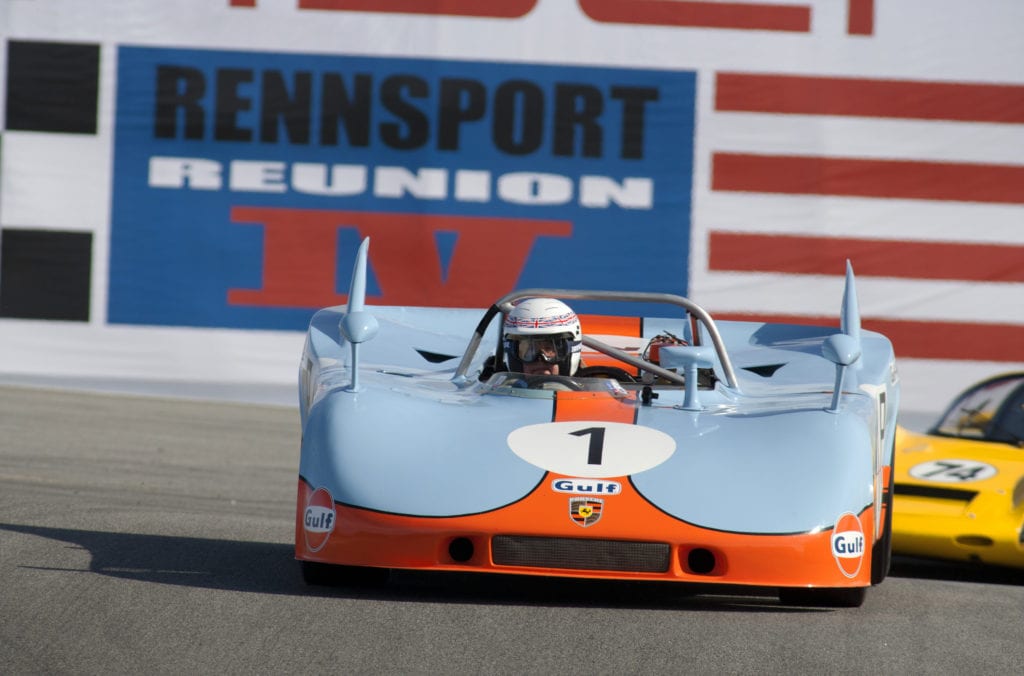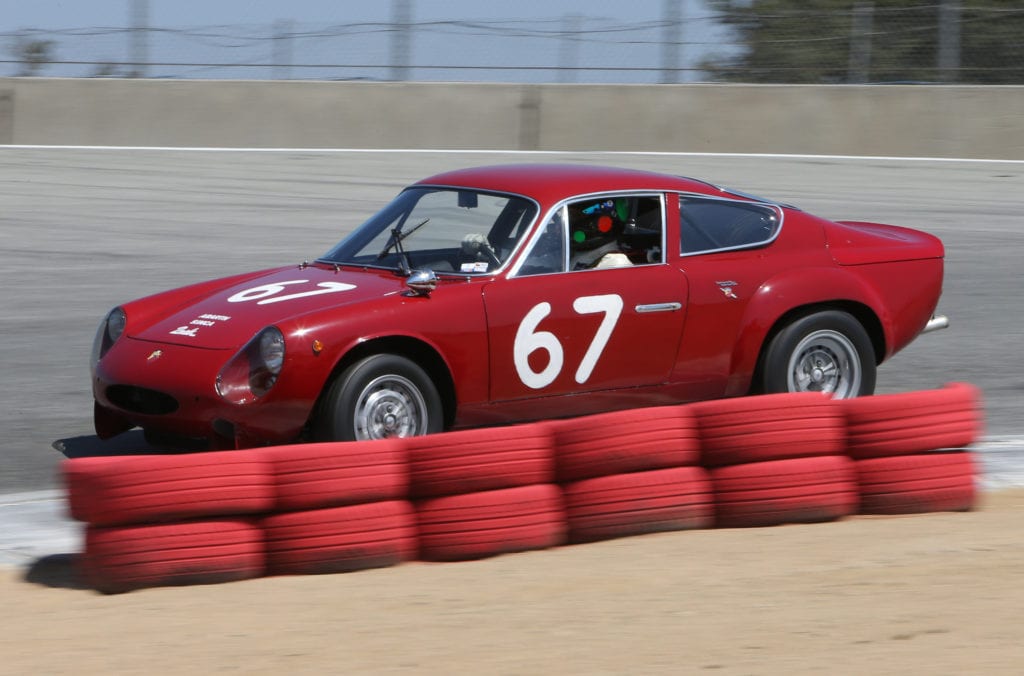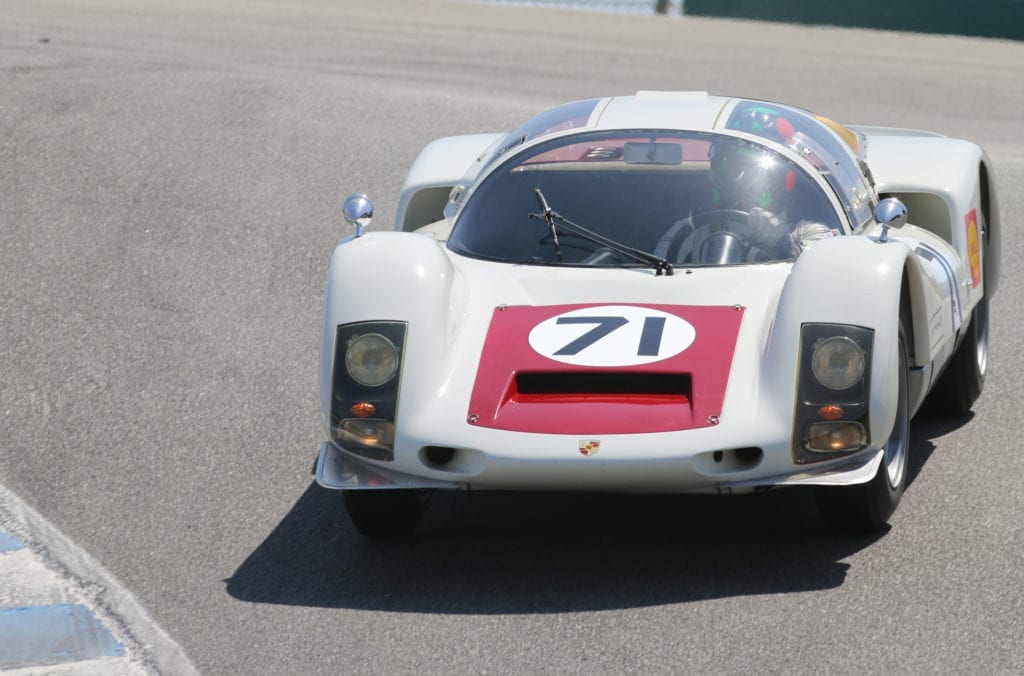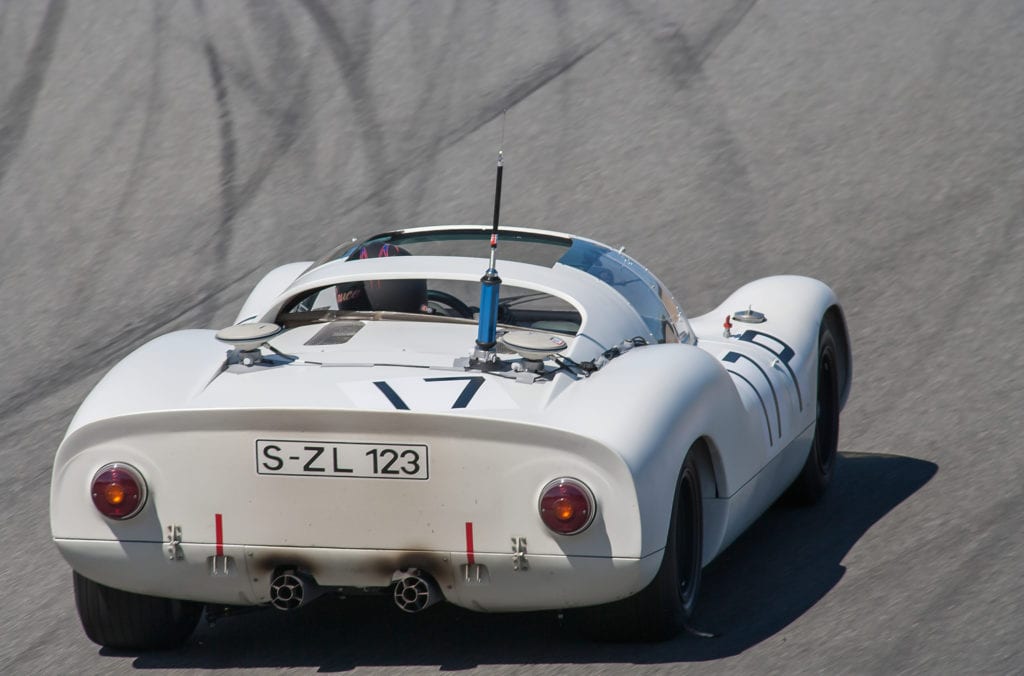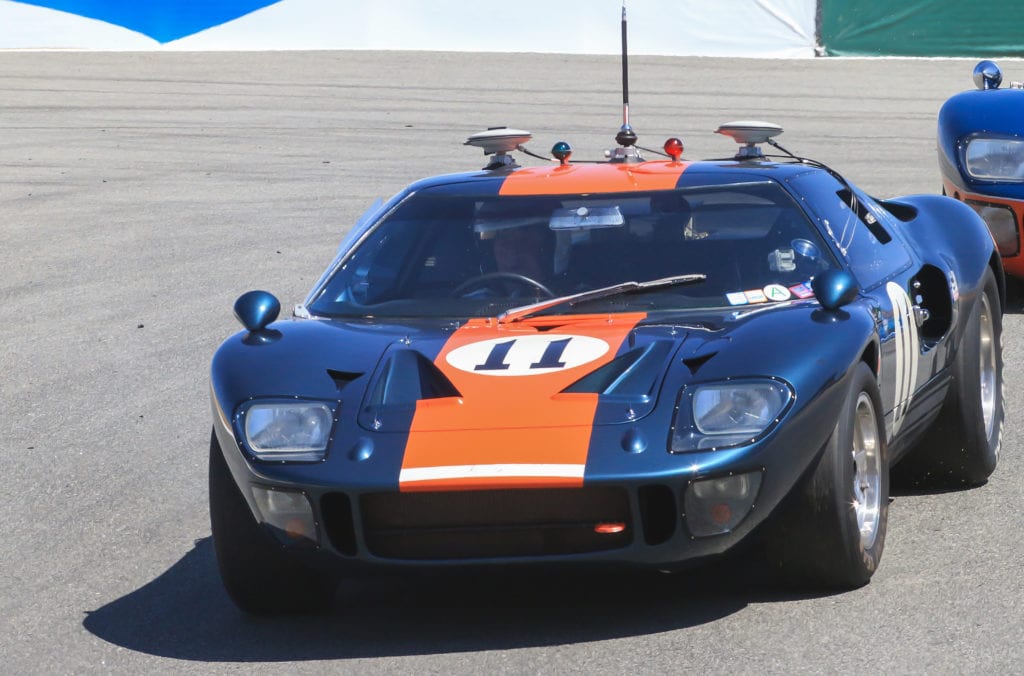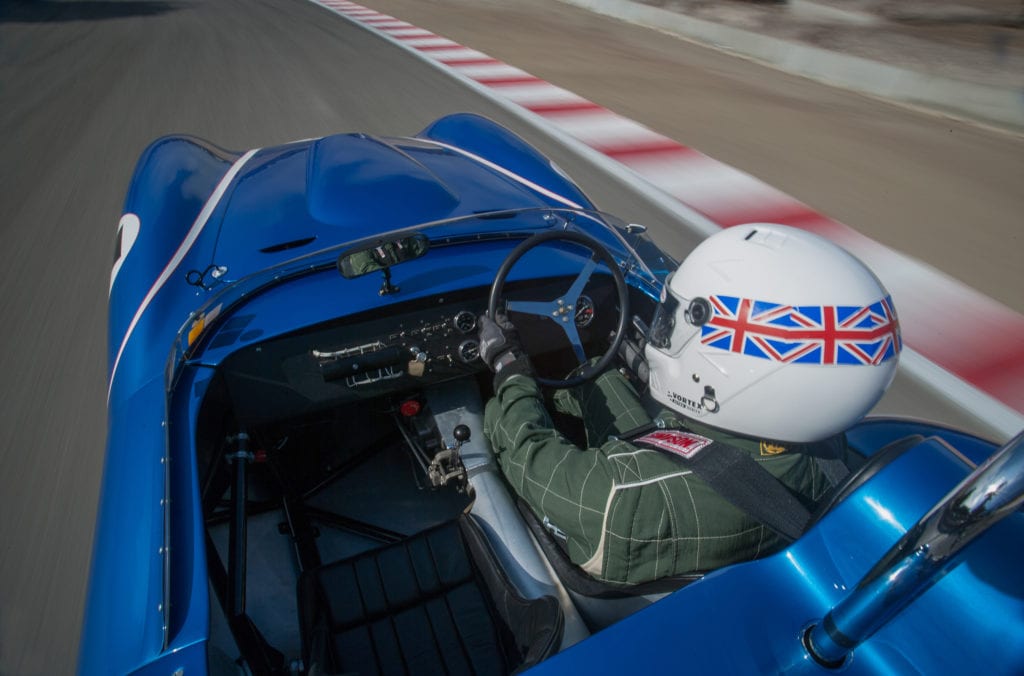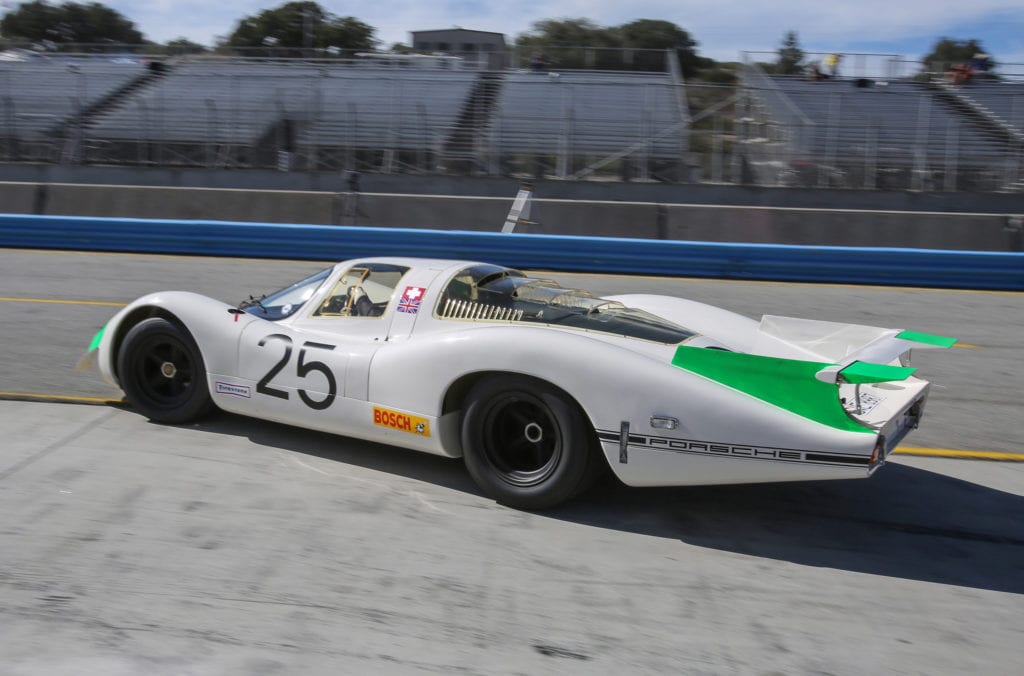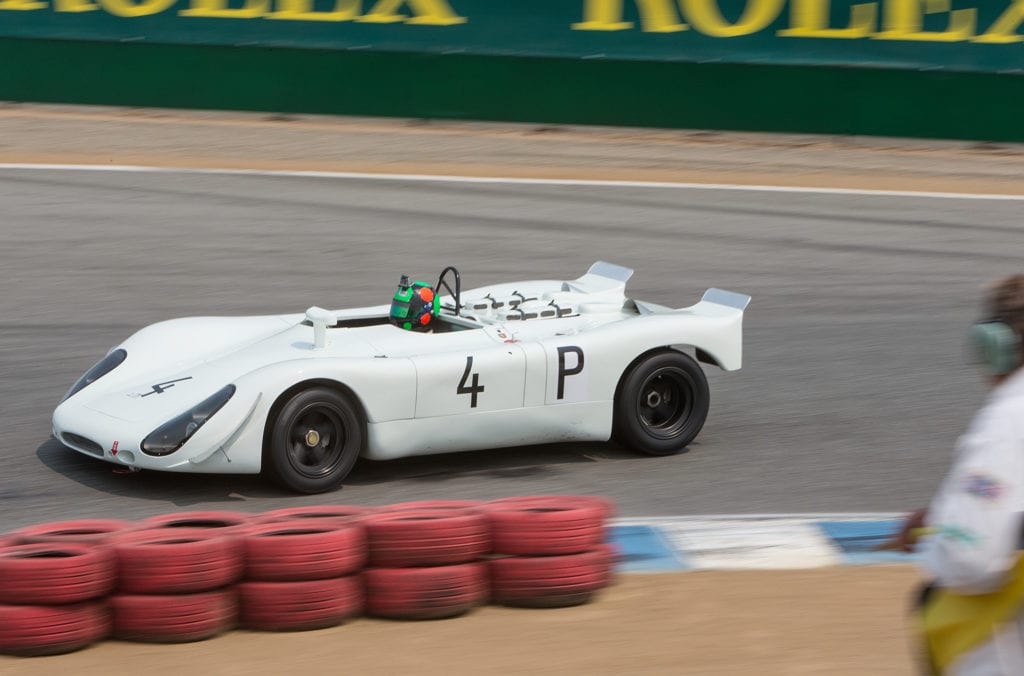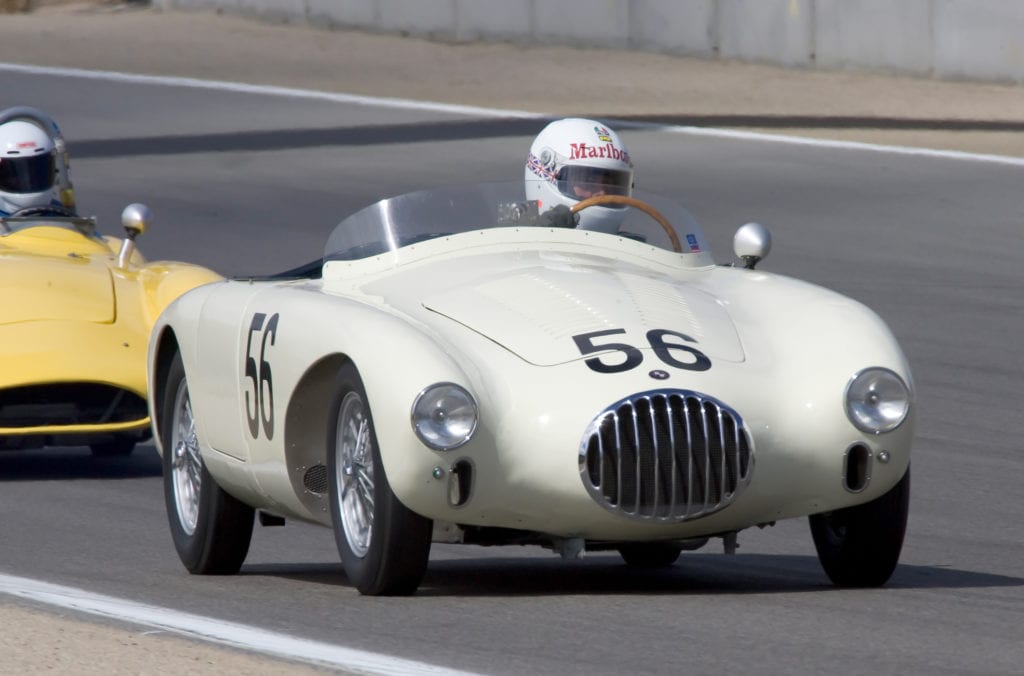Collier Collection Cars on the Corkscrew Curve; Mazda Raceway Laguna Seca turns 60
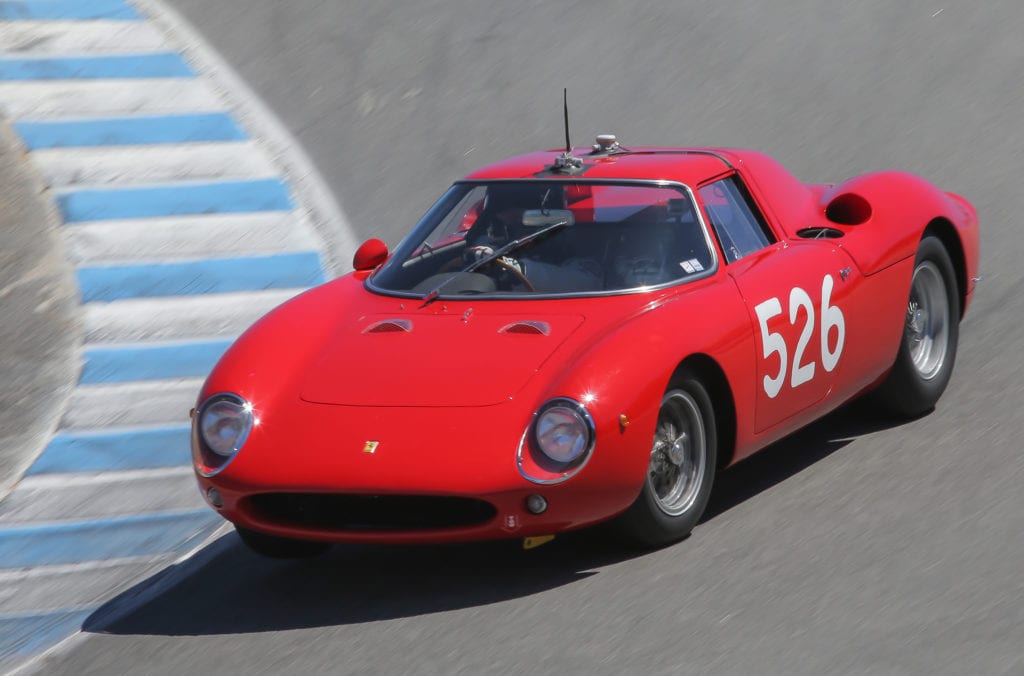
Laguna Seca Raceway’s history began with a death. Braking hard for Turn 6 on the Pebble Beach road course, Ernie McAfee lost control of his Ferrari 121 LM. On April 22, 1956, McAfee slammed into one of the hundreds of trees that lined the 2.1-mile, California Monterey Peninsula course and died instantly.
While racing through the Pebble Beach forest had to end, the spirit of the sport had taken hold on the Monterey Peninsula. Just as racing in villages like Elkhart Lake, Wisconsin and Watkins Glen, New York led to permanent tracks — Road America (1955) and Watkins Glen International (1956) — come 1957 race fans in and around Monterey had their home circuit.
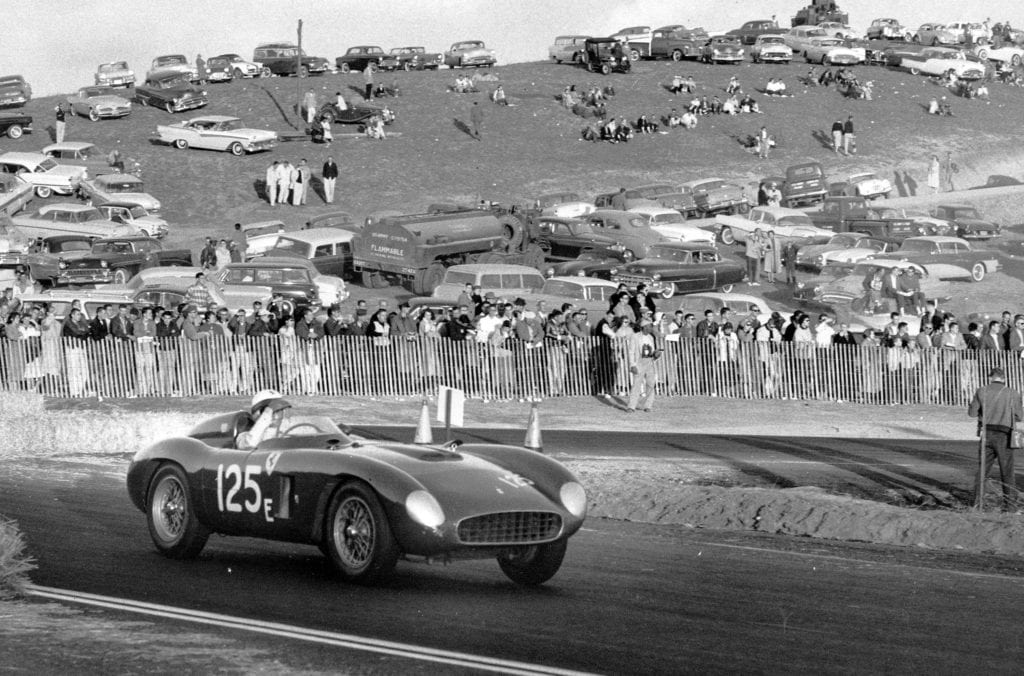
The Mazda Raceway Laguna Seca, as it’s now known, has just celebrated its 60th anniversary. Its history is rich, and cars from The Collier Collection at Revs Institute have played a part.
After McAfee’s death, local enthusiasts formed the Sports Car Racing Association of the Monterey Peninsula (SCRAMP) and cut a 5-year, $3,000 rental deal with the U.S. Army for a section of Fort Ord. The group raised $125,000, allowing construction to begin in September and come November 9, 1957, Laguna Seca (dry lake) was ready for its initial race. There were 100 entries, and 35,000 people watched Pete Lovely win that first competition in a Ferrari 500 TR.
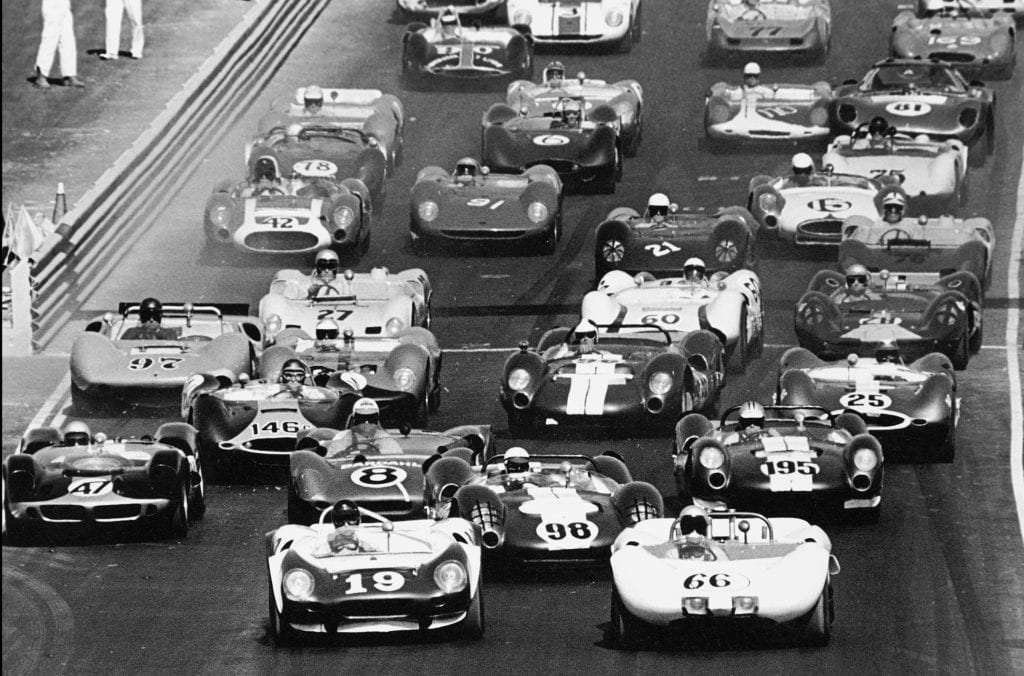
Photo Credit: Mazda Raceway Laguna Seca Archive
In its original 1.90-mile form, the track was roughly a circle, yet anything but flat. From the beginning, the dominating feature is one of the most famous corners in racing, the Corkscrew. After a hard left, the circuit swoops from Turn 8 down to the right and Turn 8A, a 5-and-a-half story drop in just 450 feet. The track continues to run downhill from there.
In 1974, the track was deeded over to the Monterey County Parks Department and is still operated by SCRAMP. Come 1988, the track went through a major layout change. A new infield section was added, upping the length to 2.14 miles and then 2.23 miles. It now has 11 corners. This reconfiguration was done to meet the minimum lap distance requirement so MotoGP motorcycles could race at Laguna.
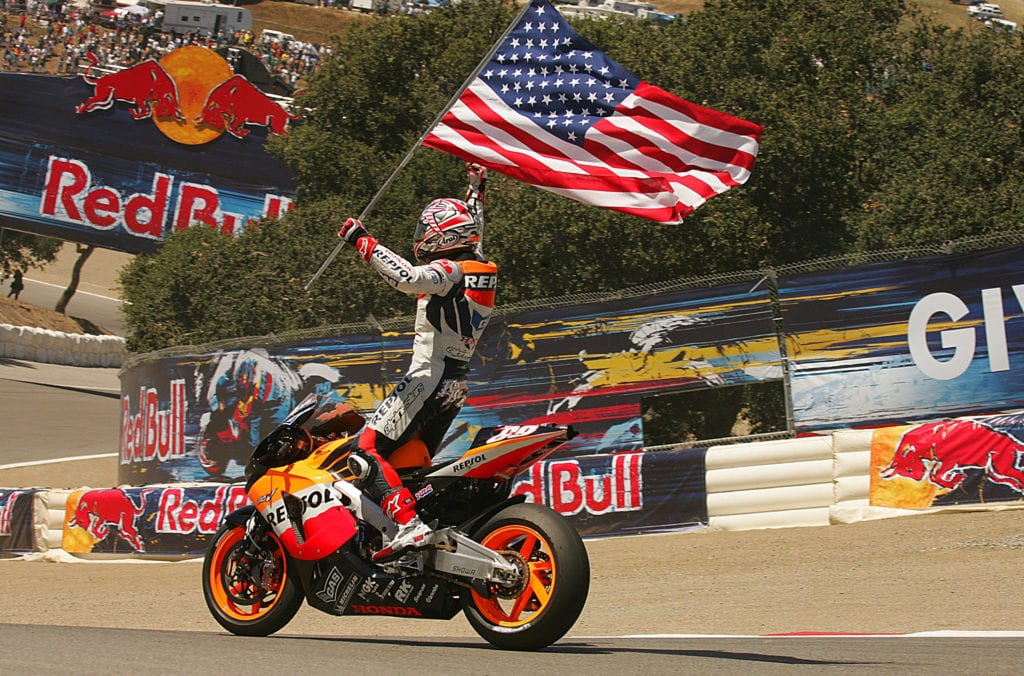
Photo Credit: Mazda Raceway Laguna Seca Archive
Another important step came in 2001, when Mazda bought the naming rights and a title change to Mazda Raceway Laguna Seca.
Through the years the circuit has hosted races by MotoGP, IndyCar, Trans-Am, Can-Am, SCCA Nationals, NASCAR, World Superbikes, American Le Mans, Pirelli World Challenge and, of course, the Mazda Miata Cup.
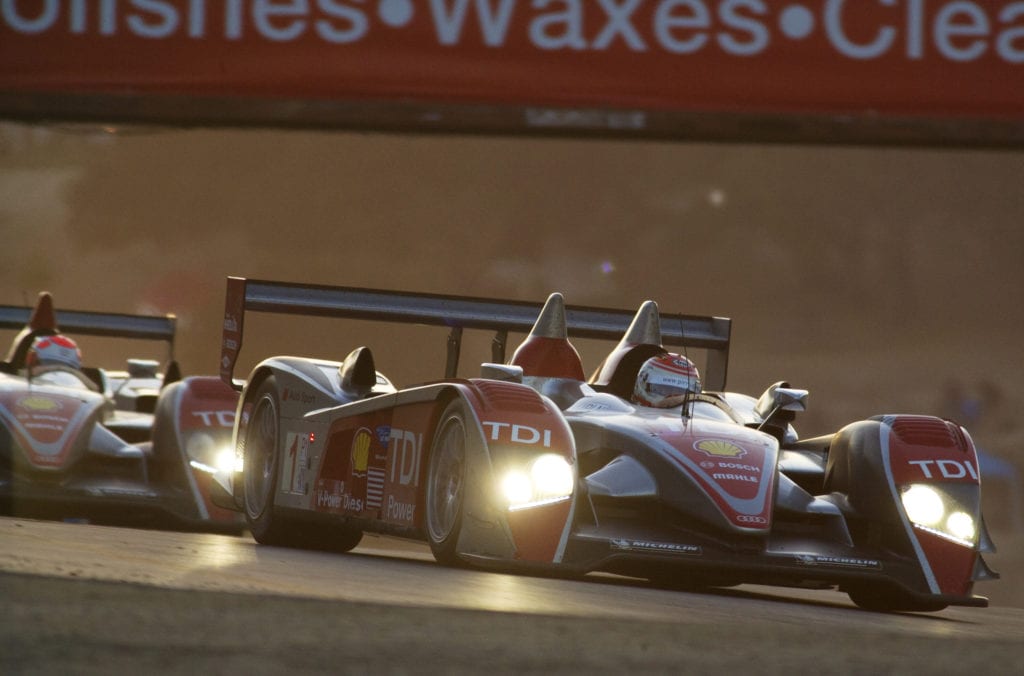
In all those seasons a few scenes still stand out. Among them:
- Kenny Robert’s seven motorcycles wins.
- Alex Zanardi’s IndyCar pass of Brian Herta by taking to the dirt in the Corkscrew.
- Nicky Hayden getting his first MotoGP win.
- Mark Donohue cutting his sub-1-minute lap on 1.9-mile Laguna in the Porsche 917/30; those who saw it will never forget it.

Photo Credit: Mazda Raceway Laguna Seca Archive
In 1974, Steve Earle founded the Monterey Historic Automobile Races, which grew into the premier vintage race program in the U.S. Now called the Rolex Monterey Motorsports Reunion, it was recently awarded the FIA’s (Federation Internationale de l’Automobile) prestigious FIA Members Heritage Cup for the quality of its presentation.
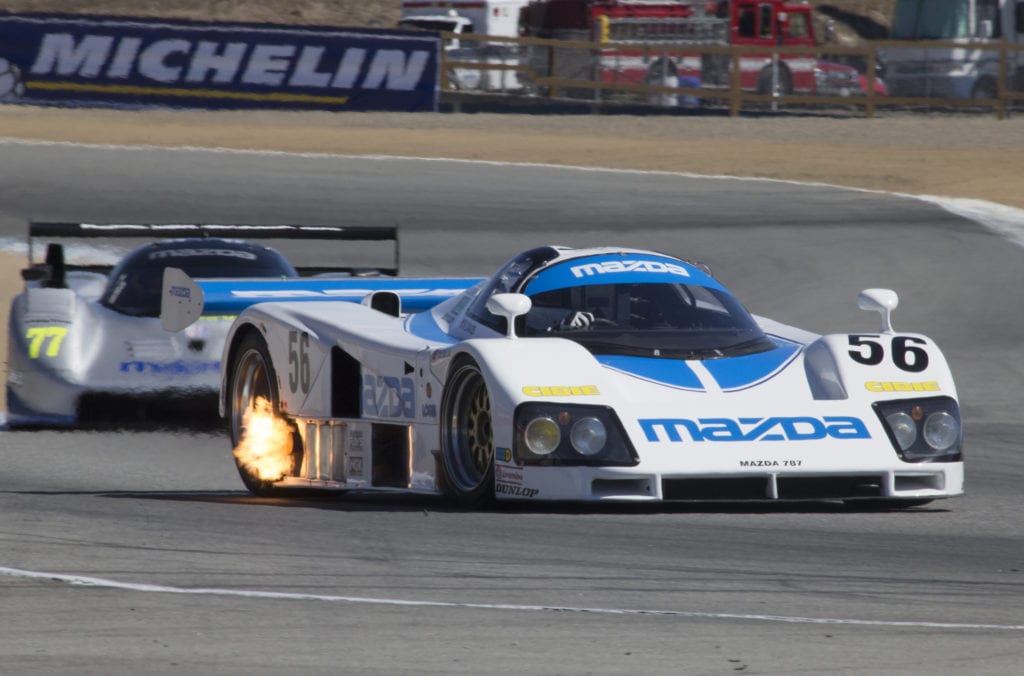
The Reunion is an annual mid-August event that runs over two three-day weekends. For Revs Institute, the event has been an annual trek for roughly a quarter of century. The list of cars from the Collier Collection that have raced there driven by the likes of Dan Gurney, Phil Hill, Brian Redman, Gunnar Jeannette, John Morton and Bruce Canepa runs on and on. Among them are several Porsches, including 908s, the RS-61 and the 910. A Porsche Abarth Carrera GTL, RS-60 and 917 P/A. And others: the Vanwall GP, Ford GT40 MKI, Corvette Grand Sport, Scarab. Abarth Simca, Cooper T-51, and Briggs Cunningham’s 1939 Bu-Merc.
Collier Collection cars will be running at the Reunion in 2018, when Laguna Seca begins its next 60 years. Which ones? Stay tuned.
For a quarter century, Revs Institute’s Collier Collection has raced its cars at Mazda Raceway Laguna Seca. We’ve created a gallery of some of their action.
